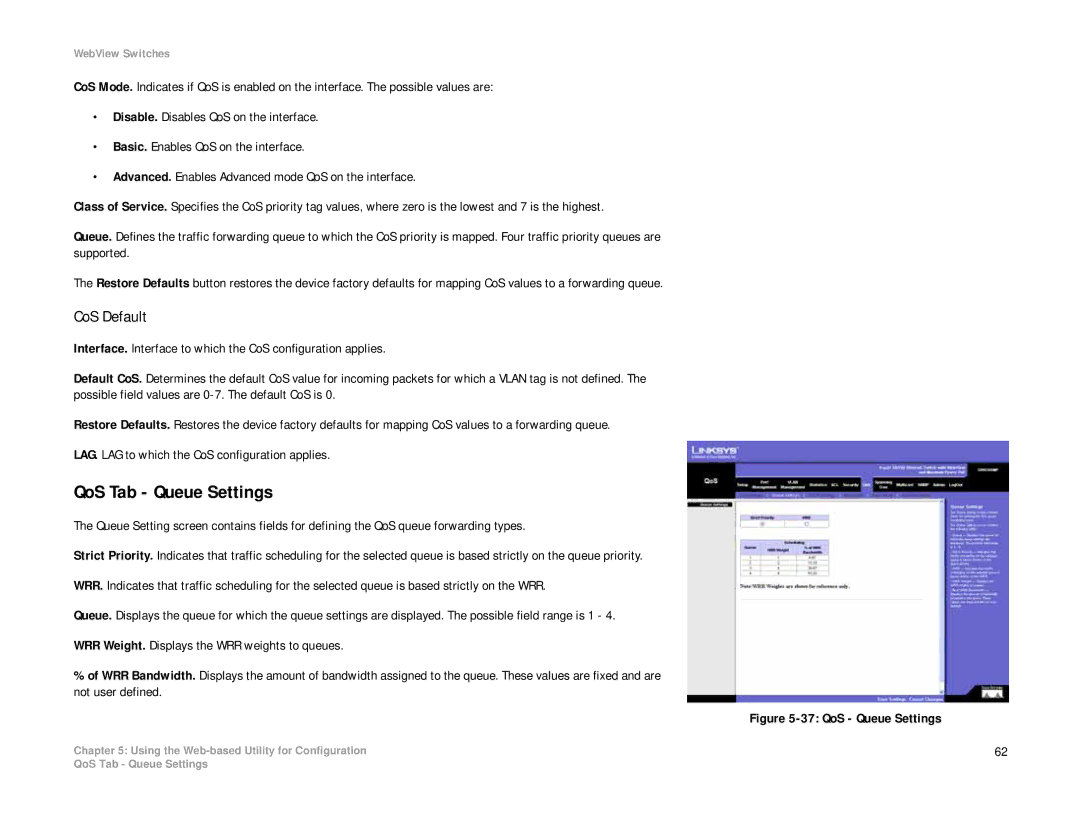
WebView Switches
CoS Mode. Indicates if QoS is enabled on the interface. The possible values are:
•Disable. Disables QoS on the interface.
•Basic. Enables QoS on the interface.
•Advanced. Enables Advanced mode QoS on the interface.
Class of Service. Specifies the CoS priority tag values, where zero is the lowest and 7 is the highest.
Queue. Defines the traffic forwarding queue to which the CoS priority is mapped. Four traffic priority queues are supported.
The Restore Defaults button restores the device factory defaults for mapping CoS values to a forwarding queue.
CoS Default
Interface. Interface to which the CoS configuration applies.
Default CoS. Determines the default CoS value for incoming packets for which a VLAN tag is not defined. The possible field values are
Restore Defaults. Restores the device factory defaults for mapping CoS values to a forwarding queue. LAG. LAG to which the CoS configuration applies.
QoS Tab - Queue Settings
The Queue Setting screen contains fields for defining the QoS queue forwarding types.
Strict Priority. Indicates that traffic scheduling for the selected queue is based strictly on the queue priority. WRR. Indicates that traffic scheduling for the selected queue is based strictly on the WRR.
Queue. Displays the queue for which the queue settings are displayed. The possible field range is 1 - 4. WRR Weight. Displays the WRR weights to queues.
%of WRR Bandwidth. Displays the amount of bandwidth assigned to the queue. These values are fixed and are not user defined.
Chapter 5: Using the
Figure 5-37: QoS - Queue Settings
62
QoS Tab - Queue Settings
